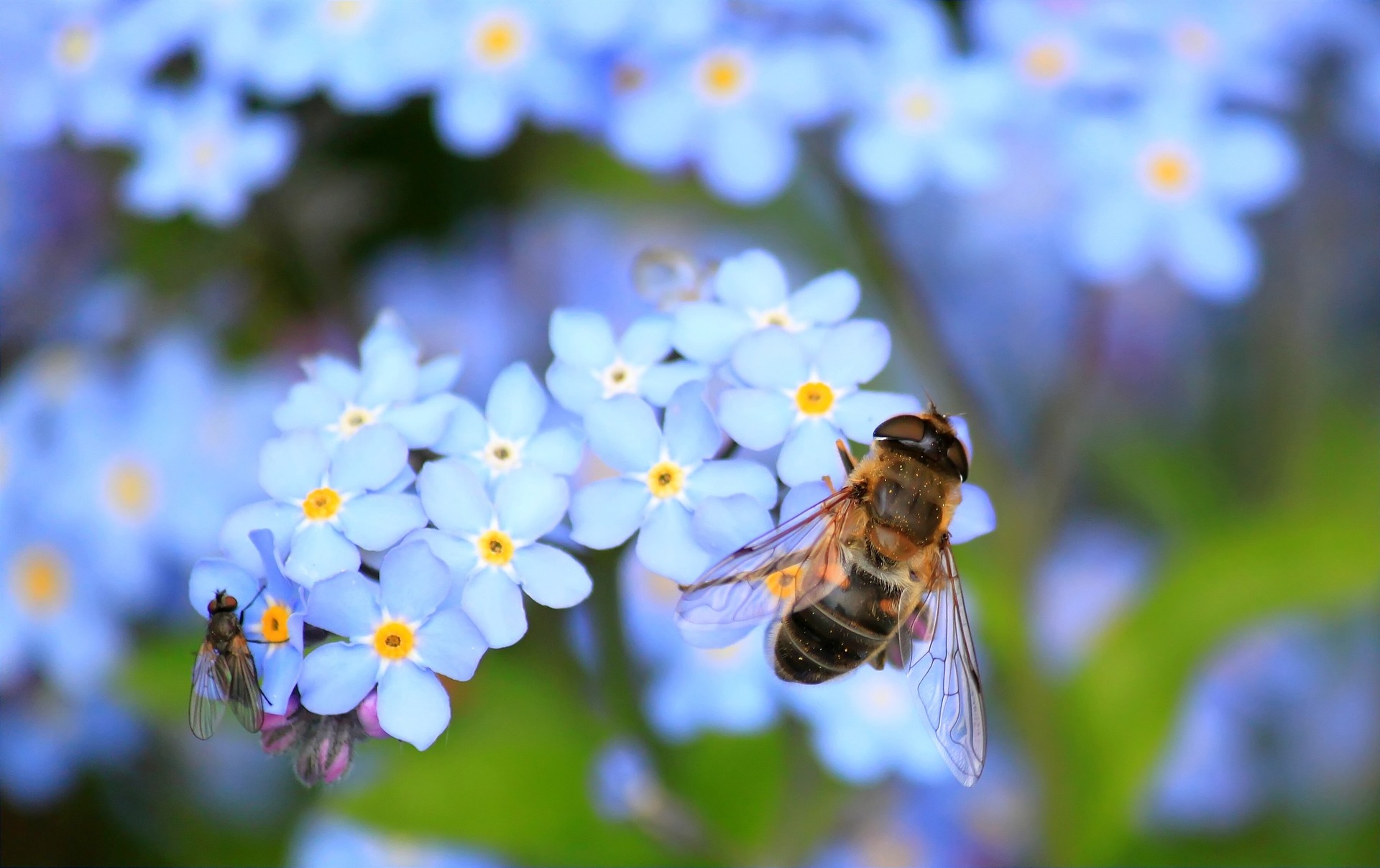Flowers and other types of plants need bees to reproduce. Bees are naturally drawn to a flower’s nectar and pollen because it is a food source. This food source eventually becomes honey which is consumed by bees and other animals. Even people enjoy eating this tasty sweet treat that is produced by bees.
There are plenty of flower species that bees commonly turn to for food. However, there are some flower species that bees avoid altogether. So, what makes bees more attracted to one type of flower than another? Well, the answer has to do with a flower’s genetic structure and the type of pollen and nectar that it produces.
The following information will explain what types of flowers bees generally avoid. It will also provide an explanation as to why bees tend to overlook these flower species for other types. Keep in mind that this is not an exhaustive list, but it will provide you with the most common types of flowers that do not attract bees.

FOXGLOVES
Foxgloves resemble tulips with their flower petals hanging toward the ground. They are very colorful flowers (mainly a bright purple), and they have a long throat bloom. A bee would have to crawl deep inside this flower’s enclosed petals to get to the nectar. Most bees just do not want the hassle. They would rather land on flower where they can immediately get to the nectar and then move on to the next bloom. This flower also comes in cream, white and red.
ROSES
Roses are flowers which are loved by many people and you can find them in many gardens. But, as it turns out, bees do not care for them at all. Bees are turned off by roses because it takes them a lot of time and energy getting nectar from them. Bees cannot easily navigate the large and cumbersome petals of roses. Also, red roses are a huge flag for bees. The color red is not attractive to bees at all. Bees see red as gray, and they avoid any plant with this color.
STRAWFLOWERS
Strawflowers are vibrant plants that have a pretty magenta color and a white hue. The strawflower is indigenous to Australia, but people can grow them here in the states. Bees typically do not like strawflowers because of their odor. The flowers grow to 3-feet tall, and though their odor is appealing to humans, bees just do not like this particular scent. They will pass this flower over for more favorable plants to find their food.
GERANIUMS
Geraniums are plants that do not give out a lot of pollen. They are attractive plants that can help to brighten up a garden, but they need pollinators other than bees to pollinate them. Bees prefer to find food from other plants that can offer more pollen and nectar.
FEVERFEW
This is an attractive plant that has white petals with a yellow center. They resemble daisies, and this flower has a great appearance. However, the scent of this plant is very unpleasant to bees. People generally like the smell of Feverfew, but the aroma confuses a bee’s senses. The scent usually covers the flower in the form of a waxy substance that bees have a hard time removing from their bodies. If your garden is having a problem attracting too many bees, consider planting Feverfew to help keep them away from your plants.
MARIGOLDS
Marigolds have a brilliant orange and yellow color. They are scentless, and they have an open pistil area that bees can easily access. However, they do not provide enough pollen for worker bees. So, they are often overlooked for other types of flowers that can provide more food for the workers.
RED DIANTHUS
The Red Dianthus is a red or pinkish colored plant. The plants are attractive flowers with a nice aroma. Once again, bees hate the color red. They will avoid it at all cost. This is one reason the red dianthus is such a great bee-deterring plant. You should plant some in your gardens to keep bees away.
CHRYSANTHEMUMS
Chrysanthemums have a double corolla which is bothersome to bees. The corolla is the petal arrangement on a flower. Chrysanthemums have a complex petal arrangement forces bees to struggle when trying to acquire pollen. Bees want to do things the easy way, and a double corolla just makes the pollination process too difficult for them. Chrysanthemums come in the colors yellow, red, maroon, pink, white, and cream.
OTHER FLOWERS THAT BEES DISLIKE
- Penstemons
- Daturas
- Zinnias
- Carnations
Bees are necessary for pollination and beautiful gardens, but sometimes those gardens can attract too many bees. Consider some of the above flowers in your garden to keep your bees under control.





